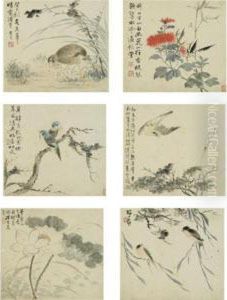Li Yu Paintings
Li Yu was not a visual artist, but a prominent figure in Chinese literature and history, known for his poetry and prose as well as his role as the last ruler of the Southern Tang Kingdom during the Five Dynasties and Ten Kingdoms period in imperial China. Born in 937, Li Yu ascended to the throne in 961 after the death of his father, Li Jing. His reign was characterized by a flourishing of culture, including literature, calligraphy, and the arts, even though politically and militarily his kingdom was weakening.
As a poet, Li Yu is celebrated for his ci poetry, a song-like lyrical form that flourished during the Song Dynasty. His works are often imbued with a sense of melancholy and reflect the personal losses and political troubles he faced. In the realm of prose, he is also known for his essays and for his patronage of the arts. Li Yu's court was a haven for artists, poets, and musicians, and he himself was skilled in calligraphy and painting, although none of his visual art is known to survive.
The fall of the Southern Tang in 975 marked the end of Li Yu's rule, and he was captured by the Song Dynasty. He spent the last years of his life under house arrest, where he continued to write until his death in 978. His literary contributions were recognized posthumously, and he is considered one of the most important figures in the development of ci poetry. Li Yu's life and work have been the subject of much scholarly study, and his poems remain an integral part of classical Chinese literature.

